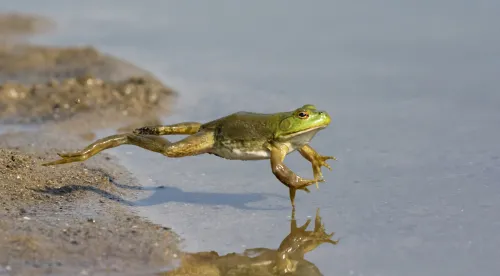You don’t see a unanimous decision of the United States Supreme Court very often, especially in an environmental case, but that’s what happened this week when the Court held that for an area to be “critical habitat” of an endangered species, it first had to be habitat.
The case is Weyerhaeuser Company v. United States Fish and Wildlife Service, et al, 586 U.S., __ (November 27, 2018) and it revolves around 1500 acres in Louisiana where dusky gopher frogs, an endangered species, once lived but haven’t been seen for over a half century. The United States Fish and Wildlife Service designated the area as “critical habitat” for the endangered frogs even though everyone agreed that they could not live there without “some degree of modification,” including replacing the timber plantation currently occupying the area with a different type of forest, something the property owner, Weyerhaeuser, did not want to do. The District Court upheld the Fish and Wildlife Service’s “critical habitat” designation and a divided Fifth Circuit Court of Appeals did as well. This week the Supreme Court sent the case back to the Fifth Circuit for reconsideration in light of its holding that an area can be designated as “critical habitat” of an endangered species only if it is first actually habitat for that species.
While that certainly makes sense, there are two other less obvious aspects of the Supreme Court’s decision that are worthy of note.
First, although the Endangered Species Act unambiguously requires the designation of “critical habitat” for an endangered species at the same time the species is listed as an endangered species, the dusty gopher frog was listed in 2001, when there were only 100 of them left at a single pond in southern Mississippi, and the Fish and Wildlife Service didn’t designate any “critical habitat” for them until 2010, after it was sued by the Center for Biological Diversity for failing to do what the law requires. This disregard by an agency of the Federal Government of its unambiguous statutory mandate is at least as disturbing as its misapplication of the law when it was forced to honor that mandate. While two wrongs don’t make a right, the first blatant wrong should not be lost in the shuffle.
Second, the Supreme Court went to great lengths to make clear that the courts can, and should, review the Fish and Wildlife Service’s decision not to exclude an area from a “critical habitat” designation even though the statute leaves the decision whether or not to exclude an area to the discretion to the Agency. Unanimously, the Supreme Court says the courts “must assess” whether the Agency’s exercise of that discretion was based on a consideration of the relevant factors, including costs and benefits.
It is striking that the Supreme Court went this far since it is pretty clear from the record that the area in question does not qualify as “critical habitat” so whether or not it would be appropriate to exclude it from a designation is likely irrelevant in this case. It is hard not to read this substantial part of the Court’s opinion and wonder about the future of the 35 year old Chevron doctrine of judicial deference to federal agencies which touches every aspect of environmental law, not just the unfortunate dusky gopher frogs.




 />i
/>i

